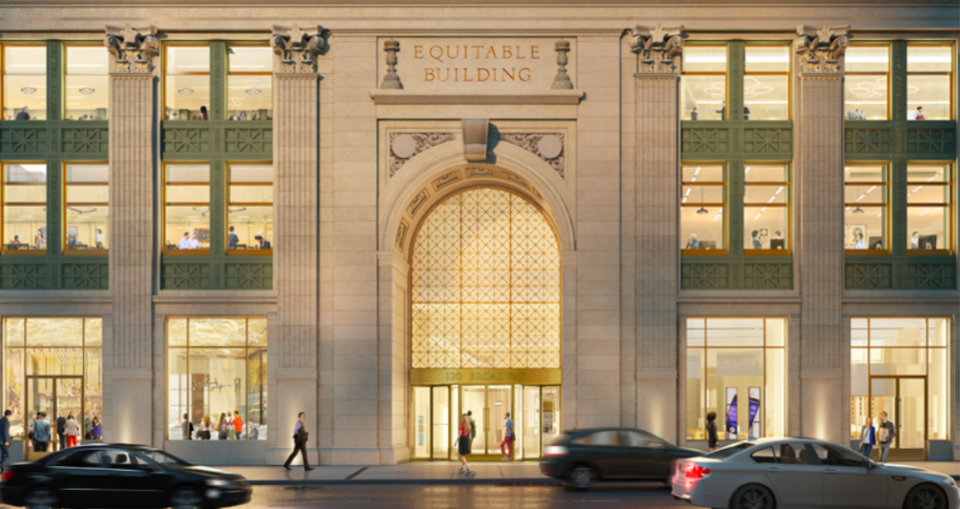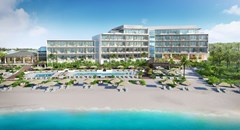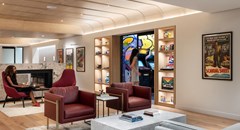By Regina Cole | Forbes
When it was completed in 1915, New York’s Equitable Building was the largest building in the world. Located at 120 Broadway in Manhattan’s financial district, it is 40 stories tall, with 1.2 million square feet of floor space on a plot that measures less than one acre. One of the city’s noteworthy Beaux Arts masterpieces, the Equitable Building features vaulted ceilings, gold leaf accents, marble floors and hand-carved architectural detailing. It spans an entire city block and historically acted as a pass-through from Broadway to Nassau Street. Now dwarfed by taller buildings, it still has a distinctive personality.
As soon as it was completed, New Yorkers expressed outrage at the enormous volume of the building, which cast a seven-acre shadow on the surrounding streets. More buildings like it would turn Manhattan into an unpleasant and dark maze of streets, they said. Thus, the city adopted the 1916 Zoning Resolution that required setbacks for new buildings to allow sunlight to penetrate to street level. The zoning ordinance is responsible for the way skyscrapers withdraw progressively as they rise. New York’s legislation led to the Standard State Zoning Enabling Act, the blueprint for zoning in the rest of the country.
Silverstein Properties, the New York real estate firm that owns the building today, calls it 120 Broadway and has just completed a $50 million renovation that brought back some of its original elements. The ornamental grid covering the glass of the two story vaulted entrance has been restored; at some point, it had been covered with green marble.
“It was ugly, and it blocked the light,” says Carlos Cardoso, architect and partner at Beyer Blinder Belle Architects & Planners. The firm occupies the 20th floor of the building, making it the ideal company to head up the project.
“We worked to restore the original design to the elevators while meeting today’s codes,” Cardoso says. “One of the biggest challenges was to create chandeliers like the ones that originally graced the lobby.” For this, he called on Rambusch, a company that has been creating lighting fixtures in New York since 1898.
“We had historic photos of the turn-of-the-century lobby, which helped to zero in on scale and mounting locations,” says Edwin Rambusch who, with his brother, is the fourth generation Rambusch to head up the firm.
“We fabricated a full scale foam core mockup and suspended it in the actual space. When we were sure that we had the scale right, we fabricated eight new 48-inch chandeliers. They are fitted with LED bulbs and subtly sweep the ceiling with light.”
Until 2001, the lobby was “The Equitable Arcade,” a pass-through between Broadway and Nassau Streets. Security concerns closed it after 9/11, but the recent restoration put turnstiles at the elevators. Today, pedestrian can again walk through the spectacular lobby corridor.


